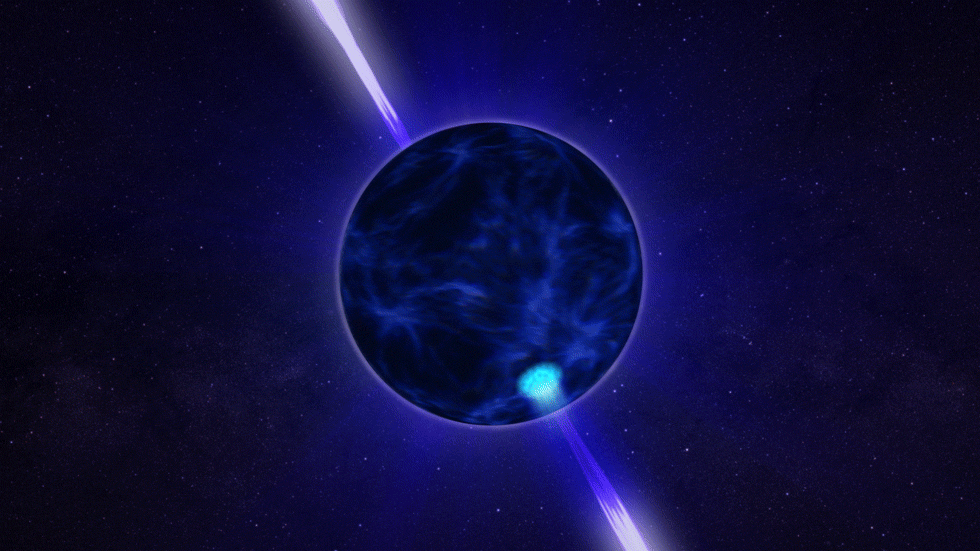Exploring the Halo of Geminga: Unraveling Cosmic Mysteries
Written on
Chapter 1: The Mysteries of Cosmic Rays
A faint halo, larger than the Big Dipper as viewed from Earth, surrounds an energetic dead star known as a pulsar. This halo could potentially unlock some of the biggest mysteries regarding cosmic rays and offer insights into pulsar behavior. The Fermi Space Telescope, launched in 2008, first detected a subtle haze of high-energy light encircling a nearby stellar remnant referred to as a pulsar. Recent analyses of this data indicate that this celestial body might significantly contribute to the creation of the cosmic rays that permeate our Solar System.
Pulsars, which are the remnants of massive stars that have exhausted their nuclear fuel, emit intense beams of radiation that can be observed from Earth under optimal conditions. One such stellar remnant, Geminga (pronounced geh-MING-ga), has been identified as being surrounded by a vast but delicate region of high-energy radiation.

If one could perceive this halo of light with the naked eye, it would span an impressive 20 degrees across the night sky—equivalent to 40 full moons arranged in a line.
"Our findings imply that this pulsar might hold the key to a decade-long enigma regarding the unexpected abundance of a specific type of cosmic particle near Earth. These particles, known as positrons, are the antimatter counterparts of electrons, and they are originating from beyond our Solar System," noted Mattia Di Mauro, an astrophysicist at NASA’s Goddard Space Flight Center.
Section 1.1: The Cosmic Puzzle
When stars considerably larger than our Sun deplete their nuclear fuel, they collapse under their own weight, often resulting in a supernova explosion. This process can leave behind a neutron star, one of the densest known objects in the universe. When these neutron stars are oriented correctly, their radiation beams can be detected from Earth, creating a pulsing appearance.

Neutron stars are enveloped by clouds of electrons and their antimatter counterparts, positrons. These particles traverse space and, upon reaching the vicinity of Earth, they are recognized as cosmic rays. Due to their electromagnetic charge, their paths are affected by magnetic fields, complicating astronomers' efforts to pinpoint their origins.
Research using various instruments has shown that the area around our planet is inundated with significantly more cosmic rays than previously anticipated. Astrophysicists have hypothesized that pulsars like Geminga may be a source of this radiation.
In 2017, astronomers in Puebla, Mexico, verified earlier observations that indicated a small gamma-ray halo surrounding Geminga. This halo exhibited energy levels between five and 40 trillion electron volts—trillions of times more energetic than visible light.
Despite theories suggesting that cosmic rays may result from collisions between electrons and light photons, the small size of the Geminga halo, as established in 2017, was insufficient to explain the excess radiation, dampening hopes that pulsars like Geminga were the source of cosmic rays.
However, some astronomers persisted in investigating Geminga and other nearby pulsars to locate the source of this high-energy radiation.
The first video titled "Brilliant Manifestation: How Pulsars Create Cosmic Particle Showers!" explores the remarkable processes behind pulsar emissions and their role in cosmic particle generation.
Section 1.2: A Breakthrough Discovery
"To analyze the halo, we had to eliminate all other gamma-ray sources, including the diffuse light generated by cosmic ray interactions with interstellar gas clouds. We utilized ten distinct models to examine interstellar emissions," explained Silvia Manconi from RWTH Aachen University in Germany.
After filtering out the interfering radiation, the remaining data unveiled an enormous glow at 10 billion electron volts, illuminating an area of the sky larger than the constellation of the Big Dipper. At lower energy levels, this phenomenon occupies an even more extensive region of the sky due to the longer distances particles must travel before interacting with light photons to produce gamma rays.
Finding a Signal in the Darkness
"My breakthrough moment occurred in the dead of night, during the frigid early hours, with my feet aching from the cold. Yet, when the results streamed from the charts, all discomfort faded away. You instantly recognize the significance of what you’ve discovered—it’s exhilarating!" shared Jocelyn Bell Burnell.
Geminga, identified by NASA’s Small Astronomy Satellite 2 in 1972, ranks among the most energetic pulsars known, emitting vast quantities of gamma radiation. Located 800 light-years from Earth in the constellation Gemini, Geminga spins at a rate of 4.2 times per second and was first acknowledged as a pulsar in 1991.

Pulsars were initially discovered in 1967 by British astronomer Jocelyn Bell Burnell, then a graduate student at Cambridge University. The regular energy beams emitted from these objects resembled a signal from a beacon, leading some astronomers to speculate they could be signals from extraterrestrial intelligence, dubbing them LGM’s (little green men).
“We didn’t genuinely believe we had intercepted signals from another civilization, but the thought certainly crossed our minds. We had no proof that these emissions were entirely natural radio signals. It raises an intriguing question—if one believes they have detected life elsewhere in the universe, how should they responsibly announce their findings? Who should they inform first?” Burnell reflected.
Soon after, Thomas Gold identified pulsars as rapidly-rotating neutron stars. Today, astronomers have cataloged over 2,000 pulsars, some spinning faster than household blenders.
While pulsars did not represent evidence of advanced civilizations in space, they have significantly contributed to our understanding of the universe. In January 1992, radio astronomers Aleksander Wolszczan and Dale Frail reported the discovery of two planets orbiting the pulsar PSR 1257+12 (a third has been confirmed since), marking the first detection of exoplanets beyond our Solar System.
This recent study suggests that Geminga alone could account for 20 percent of the high-energy protons identified by astronomers within the cosmic rays surrounding our solar neighborhood. The findings have been published in the journal Physical Review D.
Did you enjoy this article? Subscribe to The Cosmic Companion Newsletter!
Chapter 2: Pulsar Wind Dynamics
The second video, "Time-Lapse Movie Of Crab Pulsar Wind," visualizes the dynamic processes of pulsar winds and their interactions with surrounding space, shedding light on pulsar behavior.